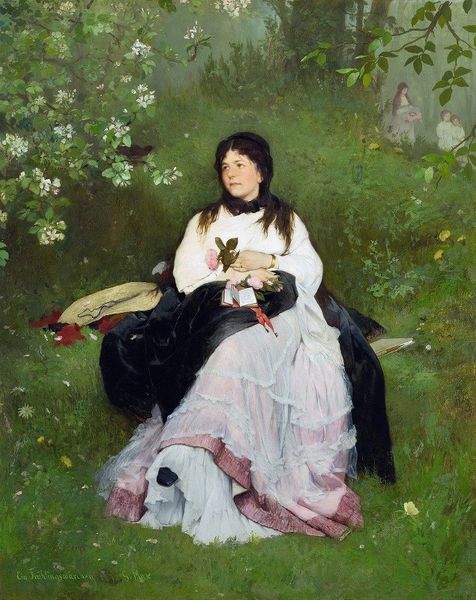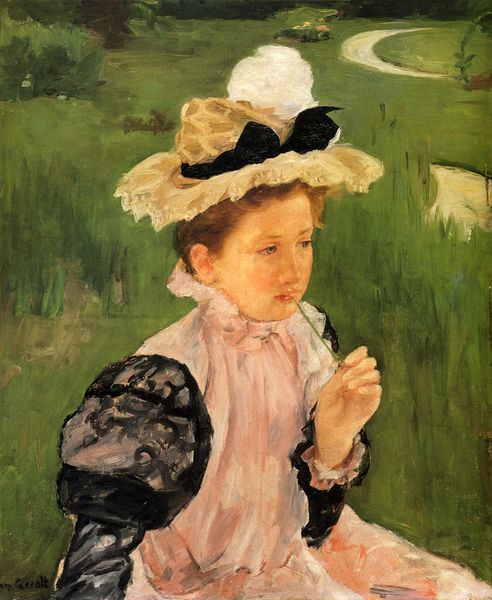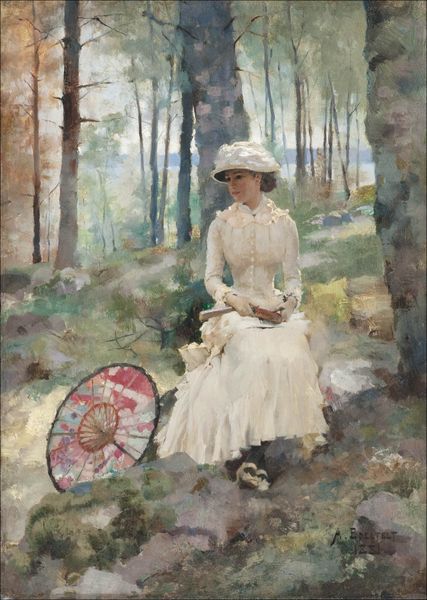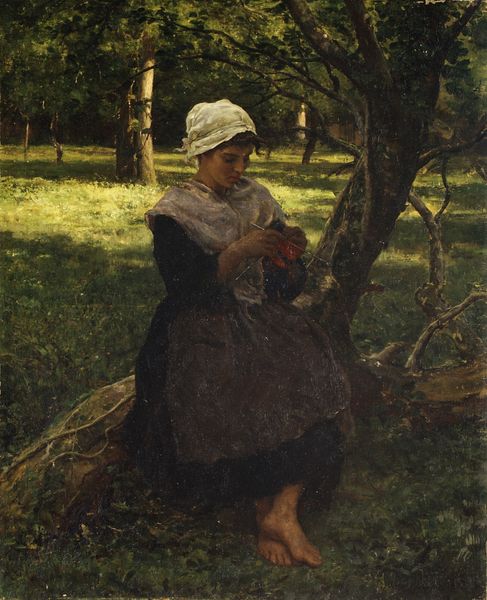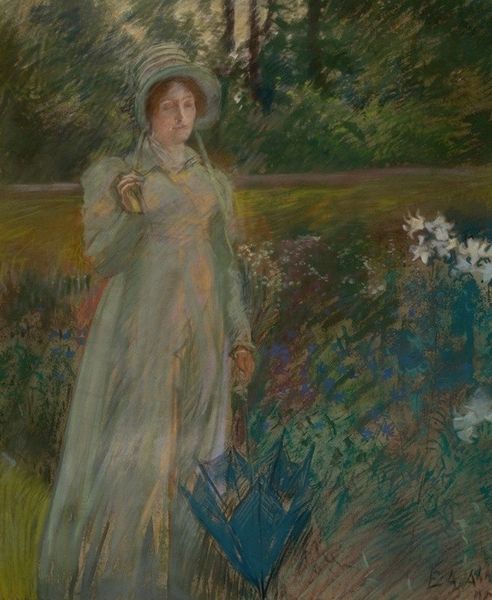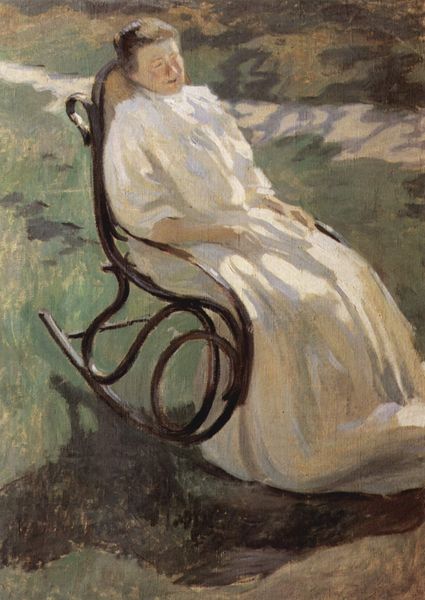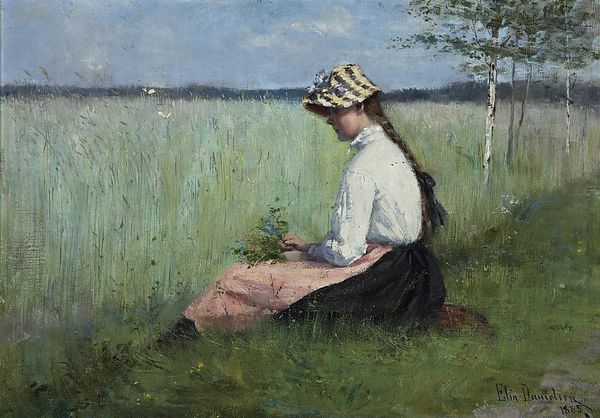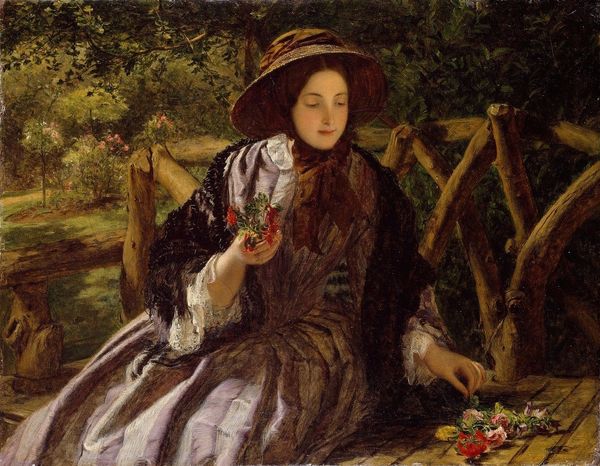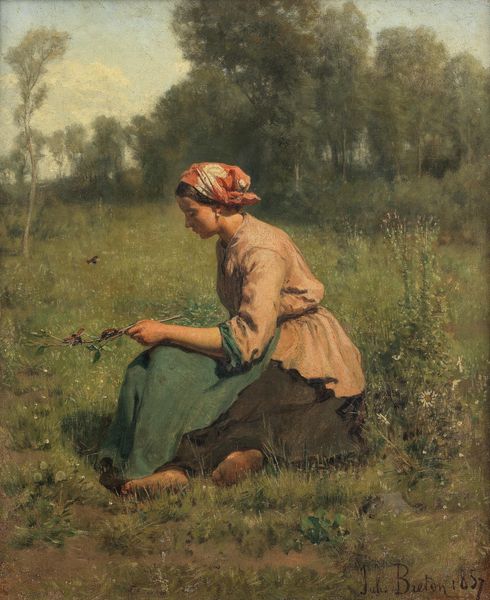
painting, plein-air, oil-paint
#
portrait
#
figurative
#
painting
#
impressionism
#
plein-air
#
oil-paint
#
landscape
#
oil painting
#
genre-painting
Copyright: Public Domain: Artvee
Curator: This is Berthe Morisot’s “Reading,” painted in 1873. Editor: It’s serene. The woman seems so engrossed in her book, almost lost within this very tactile, painted landscape. The brushstrokes in the grass! I can almost feel it. Curator: Morisot, defying societal expectations, presented women engaged in intellectual pursuits, not merely domestic activities. "Reading" is indicative of the shift toward portraying women as individuals with rich inner lives. Editor: Look at the dress, though— the dappled sunlight, the loose weave suggested by those vibrant dashes of paint. It speaks to leisure, a particular class that could afford the fabric and the time for such pursuits, sitting in a field. Curator: Exactly, and the painting’s execution also challenges traditional academic methods. Her loose brushwork became emblematic of Impressionism, which prioritizes capturing a fleeting moment over strict realism. This challenged the art establishment. Editor: Absolutely, and it also points to the economic realities of art production at the time. Those looser strokes can also mean less pigment used! Art supplies, models— these were considerable expenses for Morisot, who luckily had familial means, while still actively making and managing decisions about the work's physicality. Curator: That’s true. The materials are indeed integral to the message. It portrays a kind of carefree, yet still very intentional choice of modern, artistic liberty. One has to ask what role the family estate may play in affording Morisot that creative space. Editor: I find it compelling that an everyday act—reading—is elevated. But also considering the physical conditions: How thick is that oil paint? Is it layered? We’re asked to contemplate both the subject *and* the making of it, how that material becomes meaningful. Curator: Indeed. Considering "Reading" within the scope of Morisot’s whole practice, her perspective offers invaluable contributions to the ongoing dialogue concerning gender roles in art and society. Editor: A beautiful reminder of the interplay between subject, labor, and the tangible realities behind an image we easily call serene.
Comments
No comments
Be the first to comment and join the conversation on the ultimate creative platform.

